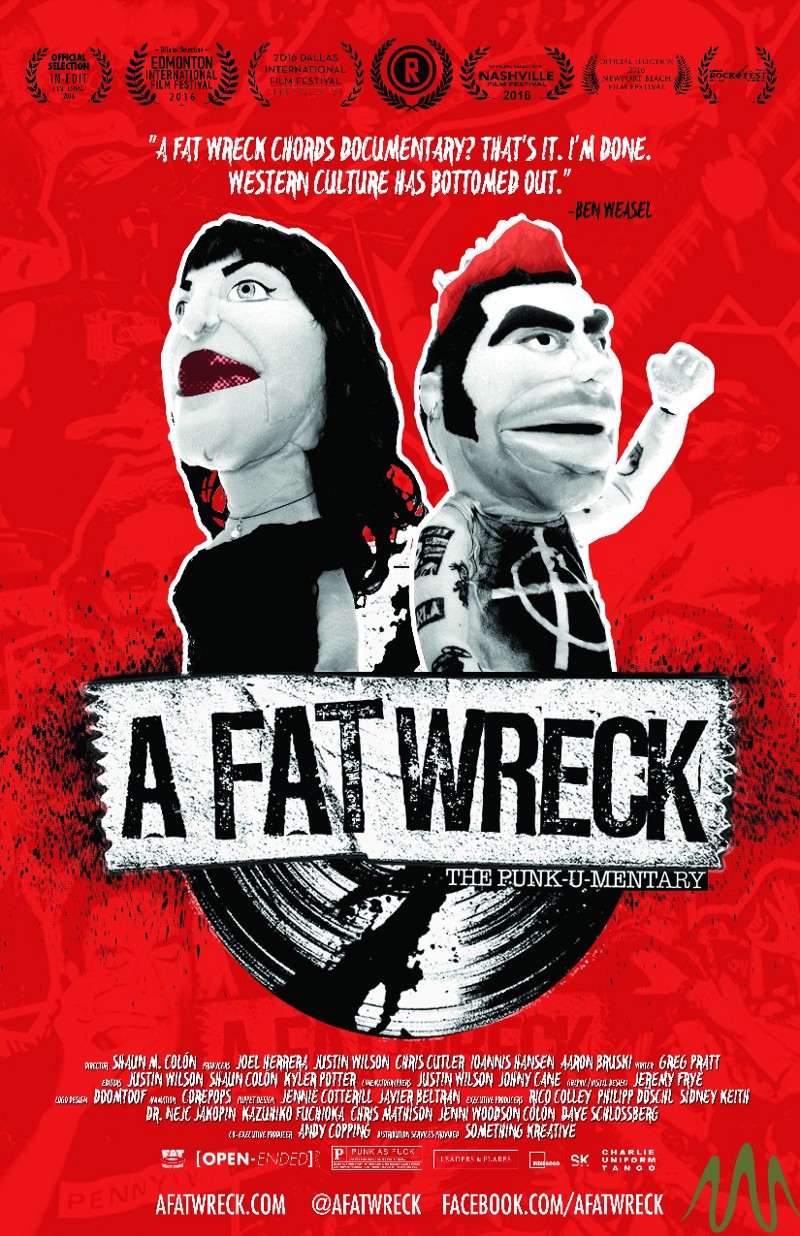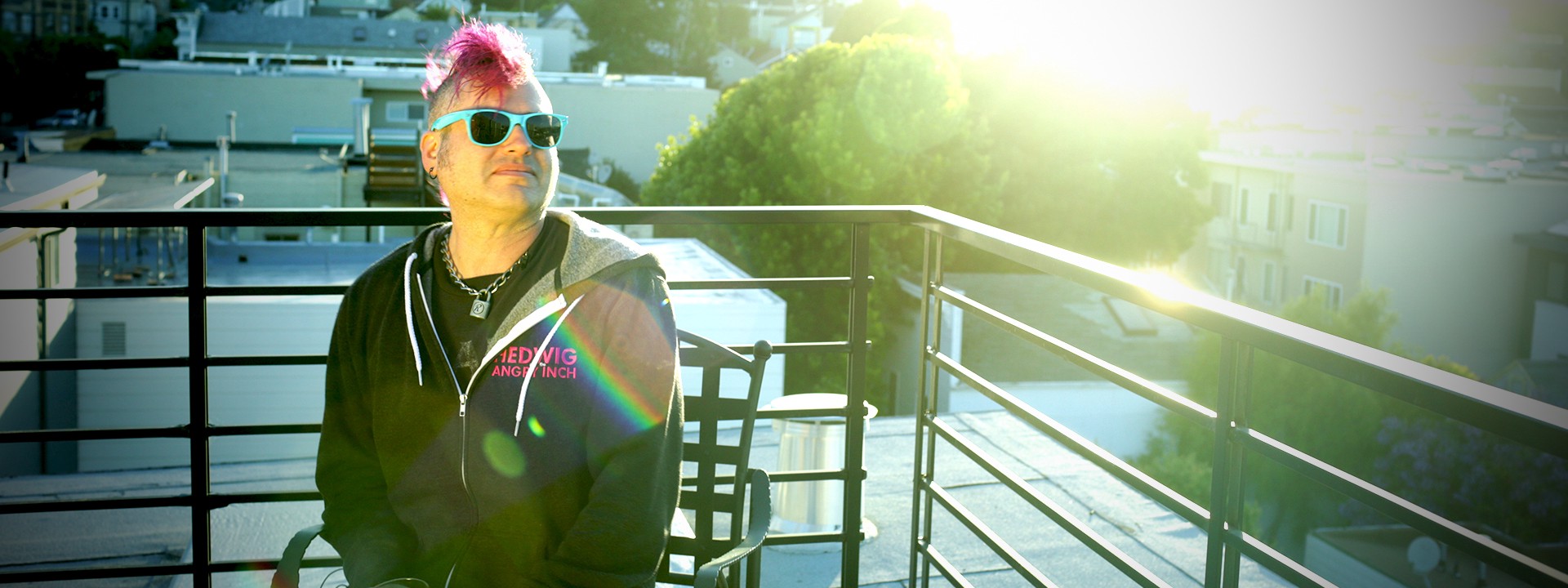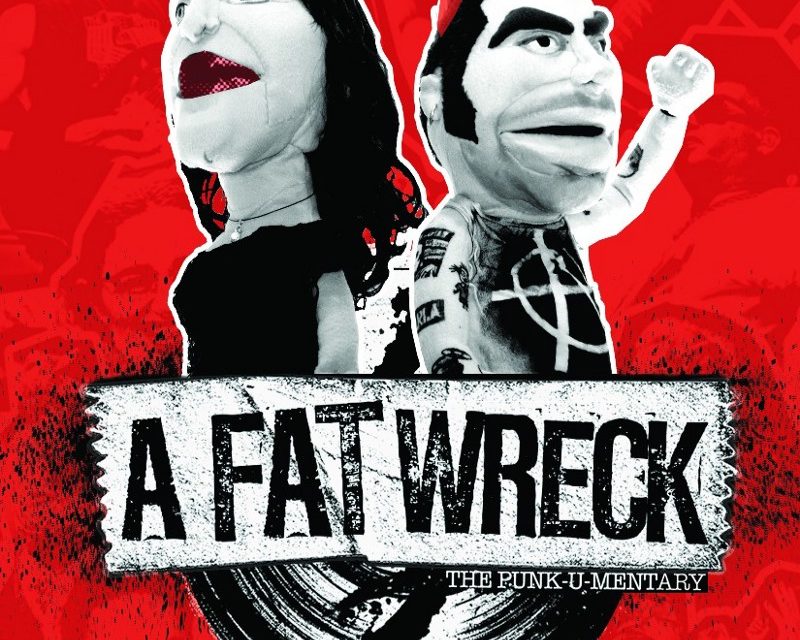
By: Shaun Colon, Writer/Director
Background:
I’ve been an audio engineer for 13 years, played in bands since high school, have a marketing background — being a marketing director for a development school and I also have a small record label. I’d been doing this stuff exclusively for 10 of the last 13 years, before coming into the movie. I really wanted to be an audio engineer and started a small recording studio called with my buddy called Dank Studios. We started looking for bands in the area that were good so we could record them and start making records. While I was doing that, Joey Cape came through Dallas and I invited him to come to our studio and record. To my surprise, he accepted. That’s how I connected to the inner circles of Fat Wreck Chords.
A Punk-u-mentary is Born:
With my band coming to a pause, I began to think about my interest in film. I started doing some music videos and a behind the scenes documentary. I thoroughly enjoyed putting them together and thought, if I’m going to do another one, I’d like to do it on something I am interested in. I mentioned to the drummer of my band that I wanted to do a Fat Wreck Chords documentary — just a 20 minute short. He was encouraging and that’s initially how I got into doing it.
With my record label, I was going out to Punk Rock Bowling in Vegas anyway. I set up a few interviews via Twitter, thinking the documentary would still in a 20 minute short. I knew there would be a higher concentration of Fat Wreck Chords fans at Punk Rock Bowling. So I started filming and interviewed people like Joe Sib. When I got back, the job I was working at as a Marketing Director was flying in judges for a showcase and one of them happened to be Ryan Greene who produced all the early Fat Wreck records. He was sent directly to me because I was the person dealing with all the judges. When he came in I told him about the documentary and asked if he’d be OK with an interview. He was stoked to do it and that gave me an inkling that it might be a bigger thing given he was someone hands on with the story as opposed to those who had simply been influenced by it.
Securing the Interviews:
It’s all about access. Each person you secure gets you additional access. Once we got Ryan Greene it made it more significant. I put together a teaser. I had been exchanging emails with Joey discussing our recording. He accidentally included me on an email thread intended for a different Shaun. In that thread was Me First & the Gimmie Gimmies stuff that included Fat Mike (Fat Wreck Chords Co-Founder) and Chris Shiflett from the Foo Fighters email addresses. So I knew I had their email addresses, but I didn’t have a reason to contact them so I sat on it. After I put together the teaser for the film, I figured it would be a good idea. I sent Mike the trailer before posting it. He came back with two words… “looks cool.” I actually considered that a path forward so I asked him if he would do an interview when coming through Dallas with NOFX. I didn’t get a response at first then the second time he said OK. I figured once I had Mike, I had more of movie here.
Mostly everyone was enthusiastic about telling the story. I occasionally had a few that were apprehensive, not so much saying no, but more so not saying yes right away. I was pretty naïve at the time as to how this all works. It’s been about three and half years since the first time I shot and there are still things now that we are tightening up. Two of those years were loose, where it wasn’t the only thing I was working on. The past year has been super intense however, where it’s what I am doing every minute of every day. It’s a complicated thing to put a movie together and distribute it legally.

The Biggest Challenges:
All the licensing. You have to first learn about it, and sometimes that’s as you go. Then you have to see the process through. Everyone gave their permission early on by saying, “Yeah, you can use it,” but then it all has to be documented. Fair use is a tricky thing. You use your best judgement, yet you need a lawyer to still go through it. It’s a lot of paperwork and spreadsheets. Every aspect of the movie that comes on screen and plays through the speakers has to be cataloged and documented. Who is it, who owns it, where was it and what type of clearance does it need? There’s a master license to clear the material itself then a synch license which is permission to synch the song into the video. With that, they can deny you and take as long as they want to reply. That’s one thing readers should take away — license your song! You then have all the control — the songwriter, not the label.
My Personal Attachment:
Given I am a big fan of this genre of music I had to make sure I was able to straddle the worlds of filmmaker and fan. I wanted the film to be honest. It wasn’t like investigative journalism where we were trying to find dirty secrets, but we were also not shying away from anything. There wasn’t a lot of conflict in the story and we were not going to manufacture it. Any family is going to disagree, but it wasn’t dramatic. Everyone is cool with each other. In addition to the information aspect, I had to make sure we made a movie that was fun and enjoyable. It was important to me to capture the energy of a punk rock song.
Puppets:
The use of puppets happened organically. I happened to be talking to one of the girls in a band I was interviewing about animation. She told me she knew how to make puppets and showed me some. I immediately thought, “That’s it, that’s how we can do these reenactments and visually tell what the stories in the movies are about.” Talking heads can be so boring. The puppets served many purposes. Animation would have been so expensive with the amount we wanted to do. The ability to not have actors and setups and shoot the idea, even with throwaway puppets was amazing from an efficiency standpoint. The cost of making all the puppets was about the same as a 45 second animation. And it was fun — something completely different and unique. It certainly helped the comedic level. I consider the film a comedy in a way, there were a lot of jokes and the puppets helped enhance that.

The Impact:
The reception has been amazing. Especially being a first-time filmmaker, the nods about the quality of the movie has been really encouraging. Not just from Fat Wreck and punk fans, but from filmmakers and music fans in general who notice all the little nuances. Overall, we’ve typically gotten 4.5–5 stars. We made sure we told all sides of the story including the criticism of the label in an effort remain honest throughout.
The Legacy of Fat Wreck Chords:
I do think some people at Fat Wreck Chords were caught off guard. Imagine someone showing up at your house wanting to make a movie about you and you don’t know who they are or what their intentions are. Plus you don’t have creative control. But that speaks volumes about the people at Fat Wreck that they did not want to shut this down. Had they gone that route, the movie would have been about that. I’m so glad that isn’t the case. Mike let me know that he thought it was an important story to be told. He wasn’t sure if it would be interesting, but thought I was able to do it in a way that made it interesting. I saw Erin Kelly-Burkett (Fat Wreck Chords Co-Founder) at the screening in San Francisco and she too thought it was well done and that we told a good story. They are a label that is always looking forward. They didn’t slow down. I was this little buzz running along the side saying, “Hey, I’m making a movie about this,” and they were like, “That’s cool, but we have records to put out.”
Biggest Takeaways:
If you are making a documentary like this, make sure you get in so deep that you can’t stop. Then it will force you to learn. I literally did everything with A Fat Wreck. I of course had help and had very talented people around me, but I did all the motion graphics and spent hundreds of hours editing. You end up getting really good at it. The DIY approach was the only way I knew to go about this so I also did things like the graphic design, created the merchandise and the marketing plan. These are things that are normally outsourced and drive up the cost of making a movie. There’s a cost to doing yourself as well. When you are learning, you mess up. I like knowing all the different aspects so I enjoyed that. But you do have to love it. Make sure you are doing it for the right reasons.
I’m grateful that I am part of the Fat Wreck Chords history now. The movie is tied to it forever. That alone is worth the effort. Then to be able to tell the story about the label and how they didn’t screw people over — there was a certain ethics to it. The story was all about family and treating people right. I think people will see that can be successful. It can be long-term and I hope that comes across in the film.
From the beginning, I noticed there are numerous punk rock documentaries out there and they didn’t seem to reflect the experience I had, which was not violent and a really forthcoming community that was accepting. I wanted the worldwide community to be highlighted — the fact that I could walk down the street, see someone wearing a Fat Wreck Chords shirt and we would immediately be friends. I like all kinds of music, but it’s the scene behind the music that has kept people like myself there for 25 years. It’s a chosen family aspect. It starts at Fat Wreck Chords. They have that culture at the label. I think that translated out to the people that like that kind of music. If anything, I want people to know there are communities like this — where you truly connect because of the main commonalties — the music and the set of ideas.
~Shaun Colon
A Fat Wreck : The Punk-u-mentary, film about the influential San Francisco based punk label Fat Wreck Chords is out on VOD and Blu-ray/DVD. It features — members of NOFX, Foo Fighters, Bad Religion, Against Me! and more.
For more info visit: AFatWreck.com
In collaboration with Jeff Gorra — Artist Waves.
If you enjoyed, please recommend below. Follow Artist Waves on: Facebook, Twitter& Medium
Contact: jeffgorra@gmail


